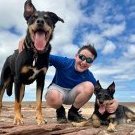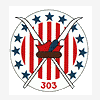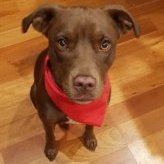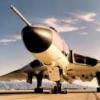Search the Community
Showing results for tags 'Mustang IV'.
-
P-51D-5 Mustang ProfiPACK (70171) 1:72 Eduard The P-51 was developed by the North American Aviation company as a potential fighter for Great Britain, but due to the poor performance of the original Allison engine at altitude it wasn’t suitable, especially for a specification that included combat at high altitude over Britain. Happily, in an attempt to correct this deficiency they decided to strap a Rolls-Royce Merlin engine to front of the airframe and it brought out the best of its design, which included the energy efficient laminar flow wing that gave it the potential to escort Allied bombers all the way to Berlin with the addition of drop-tanks and a lean fuel mixture when not in combat. It was flown in this guise as the Mustang III in British service, and as the P-51B/C in US service with a “razor-back” spine and scalloped rear-view windows behind the cockpit, until some bright spark took a blown hood that had been used successfully on the Spitfire and fitted it to British Mustangs, garnering the nickname Malcolm Hood after its manufacturer. The P-51D was altered to have a bubble canopy and cut-down aft fuselage that improved the pilot’s situational awareness, with an additional fin-fillet widely added later to regain some of the stability that had been lost by the new shape and fuel tank location. In British service it was known as the Mustang Mk.IV, and the same variant made at the Dallas factory with hollow AeroProducts props that was designated P-51K in US service was known as the Mk.IVa in RAF service to differentiate. Sadly, the hollow prop was prone to vibration thanks to some inferior quality control at the factory, so was often swapped out in the field. The P-51D is the Mustang that most people think of when they hear the name, unless they’re more of a petrol head or a bit horsey, although us modellers are more likely to ask “which variant?”. The Kit Following the launch of the initial boxings of Eduard’s brand-new 1:72 P-51 Mustang tooling, this ProfiPACK edition brings an additional sub-variant to the range, and a substantial decal sheet that contains five relevant options. There are three sprues in grey styrene, plus another of clear parts, a PE fret that is nickel-plated and pre-painted, a sheet of pre-cut masking material that isn’t pictured (think ‘yellow rectangle’), a stencil decal sheet, and the main decal sheet that contains the larger decals and national markings. The instruction booklet is printed in colour on glossy paper, and has profiles for the decal options on the rear pages. Construction begins with the pilot’s seat, which is built up with a framework seat with PE belts plus a PE document case on the back of the headrest, then the cockpit floor and fuel tanks are added in, with a framework on top that supports two radio boxes and a C-shaped bracket that fits over the assembly. A PE dial is installed on the floor, mounting control column with gaiter in front, and the seat made earlier with pilot armour and headrest, adding another pair of PE dials to the floor, plus a pair of stencils on top of the front boxes behind the pilot, remembering to detail paint the underside of the cockpit floor that will be seen through the main gear bays later. The starboard side wall frame has plenty of detail moulded-in, removing the front of some boxes, adding PE details over them, followed by the port sidewall that is prepared similarly. They are installed in the fuselage sides after painting the interior sections noted in the instructions, adding backing for the exhaust stubs at the front, followed by the tail-wheel bay that is made up from two halves, fitting the radiator pathway and a wide oval PE grille to the belly intake before the fuselage halves are closed. A separate fin is inserted into the fin with integral rudder panel, and a small insert is fitted to the aft deck behind the pilot, completing work there for now. The wheel bays are built up next with some advice regarding colour given along the way, splitting the bay down the middle with a bulkhead and bracketing it front and back with bay walls that have partial ribs moulded in place, and here the detail is excellent, including a landing light assembly that is fitted at an angle within the bay, using a scrap diagram to guide you. This assembly is fitted to the full-width lower wing along with ammo chute backing plates, and drilled out holes if you intend to mount the bomb racks. A single clear part for the three identification lights is installed in the starboard lower wingtip before the wing uppers are glued on and the aileron tabs fit into slots in their recesses, with some room for deflecting them if you wish. The short section of the nose moulded into the wing lower has a PE template to help you scribe a rectangular panel line under there, filling three of the other panel lines there with your favourite filler. On the leading edge is an insert for the guns with barrels moulded-in, adding a small tip light plug into the ends of the wingtips as they are mated with the fuselage. Then the elevator fins slide into slots horizontally, while the rudder is moulded into the tail fin that was installed earlier. The instrument panel gives you a choice of styrene or PE options, depending on which you prefer, the more detailed option layering a choice of two pre-painted PE parts for the main panel and another for the smaller central section. The styrene option is made from two parts, and has four decals represent the dials and switch-gear. The coaming has the panel fitted under it, mounting a gunsight on top, then hanging the rudder pedals from pegs behind the instrument panel. It is dropped into the front of the cockpit, and a scrap diagram shows it from the side, ensuring it is suspended vertically, perpendicular to the sill. The model is flipped over to install the outlets for the radiator, the larger aft exit held in place by a vertical PE actuator, gluing the tail gear strut and separate wheel into the bay under the tail, showing the correct angles in scrap diagrams nearby, and fixing a V-shaped PE retraction jack at the front of the two moulded-in doors. The intake lip is fitted along with a PE splitter under the belly, adding a PE appliqué panel behind it, whilst under the nose a pair of inserts are installed, using solid parts from the sprues, following which the smiley chin-intake lip is fitted under the prop back-plate, and five small raised marks are removed from the lower wings forward of the flaps near the outer end, then it’s time to build the landing gear. The tyres are moulded intact and have diamond tread, with hub caps added from either side before they’re fitted to the struts, which have moulded-in scissor-links and door actuators, adding the captive bay doors later. The flaps are each made up from two styrene parts with a tiny piece of PE added to the inner end of each one and a decal on the curved leading edge applied after painting, which you’ll need to remember to do later. Main gear and flaps are all slotted in place on the underside along with the captive outer bay doors, inner doors with actuators and a pitot probe under the port wing, after which you can rest her on her wheels for the first time. The prop is made from two pairs of blades that fit perpendicular to each other between the two spinner halves and separate back-plate, fitting it to the plate on the front of the fuselage. There are two styles of hood with two internal parts for all options in this boxing, gluing the windscreen into the front along with an optional rear-view mirror at the apex of the canopy. It can be glued over the remaining cockpit space in the closed position, or you can slide the canopy to the rear, using the scrap diagrams for guidance, and masking them with the included pre-cut kabuki-tape masks. A backup ring-and-bead gunsight is fitted, the ring inside the canopy, the bead on a short post on the top cowling, drilling a 0.3mm hole in the deck first. The exhausts are either single parts, or are made from two parts each, fitting them into slots in the cowling after painting them a suitable hot-metal colour, and fixing an aerial on the spine behind the cockpit. Drop tanks are last to be made, with a choice of three tank types that all share the same style of pylon, and they are each made from two halves. A few spare weapons are left on the sprue, including a set of five rockets for under each of the wings, which have separate tails and moulded-in launch-rails, plus a pack of three tube-carried rockets in a triangular cluster, and two sizes of bombs with separate fins. Markings There are five decal options included in this boxing, some wearing camouflage and others in bare metal. The overall term “bare metal” isn’t quite correct for the Mustang though, as large areas of their wings had their panel line joints puttied over to increase aerodynamic efficiency and thereby top speed, so it was necessary to overpaint these areas with a silver lacquer to harmonise the finish. These areas are marked out on a half-page series of profiles that show which are which, including aileron trim-tabs, plus elevator and rudder flying surfaces. From the box you can build one of the following: s/n 44-13321, Lt. George E. Preddy, 487th FS, 352nd FG, 8th AF, Bodney, United Kingdom, July 1944 s/n 44-13318, Lt. Col. Thomas L. Hayes Jr., CO of 364th FS, 357th FG, 8th AF, Leiston, United Kingdom, August 1944 s/n 44-13606, Capt. Claude J. Crenshaw, 369th FS, 359th FG, 8th AF, East Wretham, United Kingdom, September 1944 s/n 44-13859, Lt. Walter Mullins, 55th FS, 20th FG, 8th AF, Kings Cliffe, United Kingdom, September 1944 s/n 44-13321, Capt. John M. Simmons Jr., 317th FS, 325th FG, 15th AF, Lesina, Italy, September 1944 The decals are printed using a digital process and have good registration, sharpness, and colour density, with a thin gloss carrier film cut loosely around the printed areas. This means that the carrier film on their decals can be coaxed away from the printed part of the decal after they have been applied, effectively rendering them carrier film free, making the completed decals much thinner and more realistic, and obviating the need to apply successive coats of clear varnish to hide the edges of the carrier film. It’s a great step further in realism from my point of view, and saves a good quantity of precious modelling time into the bargain. There are masks for both styles of canopy in this boxing, pre-cut to shape from yellow kabuki-style paper tape on a sheet, including masks for the wheels, allowing you to cut the demarcations between tyres and hubs with ease. Conclusion Eduard have created a similarly well-detailed kit to their 1:48 offering in 1:72, and with it comes the ease of build of its larger sibling, PE and masks, plus a choice of five decal options. Highly recommended. Review sample courtesy of
-
Hi all, thought I'd put my placeholder down for this GB I will be building Eduard's P-51D-20 Mustang as an RAF 19 Squadron Mustang Mk.IV in 1945 Here's the obligatory kit photos 🙂 Couple of parts appear to have come off - especially one of the canopies on the clear sprue wheel. AM is Look Instrument panel, Brassin Wheels and Exhausts and Xtradecal Decals Still working on my Beaufighter build in the WW2 Twins Mega Build but can't wait for the off on this one Thanks for looking Many regards Matt
-
I'm nearly at the end of this build after more than four years. It's on its feet and all the nav lights and landing gear doors are attached. I still need to add the antenna wire and the pulley block that guides it through the bubble canopy...well that and some paint touch-ups here and there. If anyone cares to see in-progress photos the link is at the end. The weathering was done with water-soluble graphite pencils that I found in an art supply store in town. The beauty of it is that it can be wiped off with a damp cloth if you are not happy with the results. With a sharp point you can wet it and follow the panel lines. It will lay down a fine line of sludge which you can then wipe in the direction of the airflow. It can also outline access hatches and panels. The thing to remember, which I learned the hard way, was that it darkens considerably when hit with a clear coat. The exhaust stains were another learning experience. I had never applied exhaust stains with an airbrush before, and the first attempt was with extremely thinned black paint and it was far too dark, and black. I managed to remove it all without too much trauma. The second attempt was with my own mix of dark grey and red-brown thinned to almost water. I learned that the perfect amount of stain was about two or three passes BEFORE you think it looks good. 🙂 Oddly enough in some light it looks thin and grey, in other lighting it looks very dark. I'm not touching it again! Sorry about the weird backgrounds, I was experimenting with lighting and background colours with my DSLR camera. Hopefully I'll do better when it's done.
-
After too long lurking around the forum I've finally taken the plunge and shown my face! I returned to this great hobby recently after a 30-odd year hiatus, and with the help of much advice from this august body I'm finally getting to a stage where I'm happy to show the results of my toils. Sooooo... Airfix's excellent newish tool 1:48 Mustang IV finished OOB (except for Eduard PE interior set) as CV@A of 3 SQN RAAF, based in Italy, July 1945. Airbrushed with a mixture of Tamiya and AK Interactive acrylics (both excellent), finished with Micro Gloss coat for decal coat, Flory wash and Tamiya matt coat from a rattle can. Because the camo pattern was relatively simple I freehanded the Dark Green and I'm quite pleased with the outcome. I loved the engineering of the kit, and the decals were mostly excellent (albeit with some disappointing silvering on the signature Southern Cross - doh). I'm mostly pretty happy with the final result, despite the usual plethora of minor niggles & errors. Happy to receive any feedback - please be kind! Cheers, Roger
-
After too long lurking around the forum I've finally taken the plunge and shown my face! I returned to this great hobby recently after a 30-odd year hiatus, and with the help of much advice from this august body I'm finally getting to a stage where I'm happy to show the results of my toils. Sooooo... Airfix's excellent newish tool 1:48 Mustang IV finished OOB (except for Eduard PE interior set) as CV@A of 3 SQN RAAF, based in Italy, July 1945. Airbrushed with a mixture of Tamiya and AK Interactive acrylics (both excellent), finished with Micro Gloss coat for decal coat, Flory wash and Tamiya matt coat from a rattle can. Because the camo pattern was relatively simple I freehanded the Dark Green and I'm quite pleased with the outcome. I loved the engineering of the kit, and the decals were mostly excellent (albeit with some disappointing silvering on the signature Southern Cross - doh). I'm mostly pretty happy with the final result, despite the usual plethora of minor niggles & errors. Happy to receive any feedback - please be kind! (I've only managed to upload the one photo - schoolboy error no doubt) 😉 Cheers, Roger
-
Hi everyone My Mustang IV.. Thanks for looking Iain
- 11 replies
-
- 14
-

-
I have just received a re-print of below decal sheet; Freightdog 1/72 Keeping the Peace Pt.1 decal [FSD72012] - price £7.50 plus postage High quality silk screen printed decals covering late and immediate Post-War period. Includes six options; NA Mustang Mk.IV 'BAE' KH745, flown by Group Captain Brian Eaton, RAAF, Cervia, Italy, April 1945; Mustang Mk.IV 'GA-S' KH774, 112 Sqn RAF, Cervia, Italy May 1945; Mustang Mk.IV 'JAS' KM232 flown by Wing Cdr 'JAS' Storrar, Hunsdon Wing leader, May 1945; Supermarine Spitfire Mk.IXc 'RN-R' MK679, 72 Sqn RAF, Zeltweg, Austria November 1946; Spitfire Mk IXe 'RG-J' RK857, 208 Sqn Sqn RAF, Peta Tiqua, Palestine early 1946; Hawker Tempest Mk.V, 'JJ-R' SN135, 274 Sqn RAF, B-155, Dedelstorf, Summer 1945. Ideal for use with our Mustang Mk.IV resin conversion, available separately. Limited re-print run of 150 sheets. For more details please see my website. Thanks! Colin http://www.freightdogmodels.co.uk
- 2 replies
-
- Mustang IV
- Spitfire IX
-
(and 2 more)
Tagged with:


.thumb.jpg.a1642e430572922c3befa12f87efb548.jpg)




